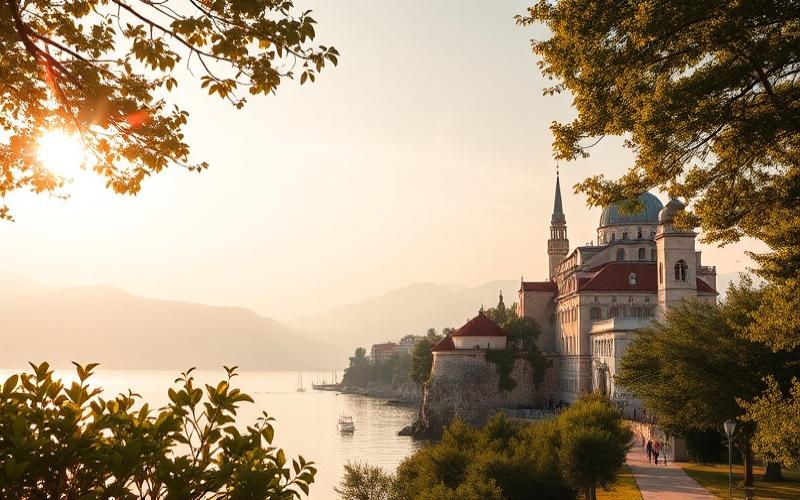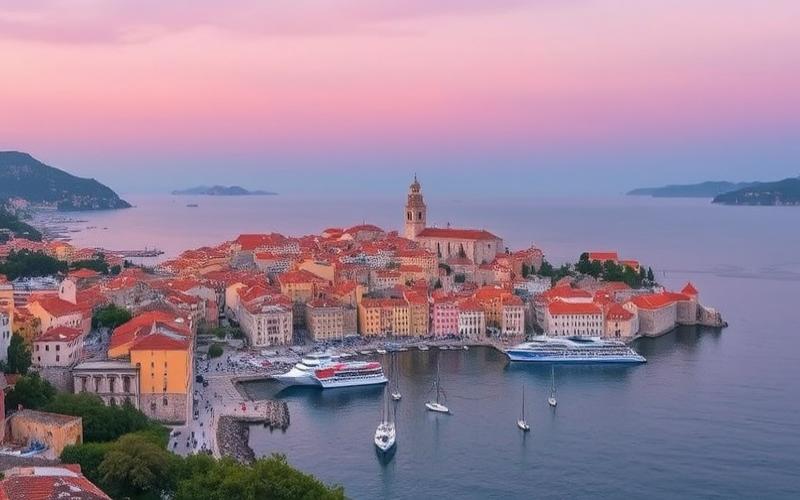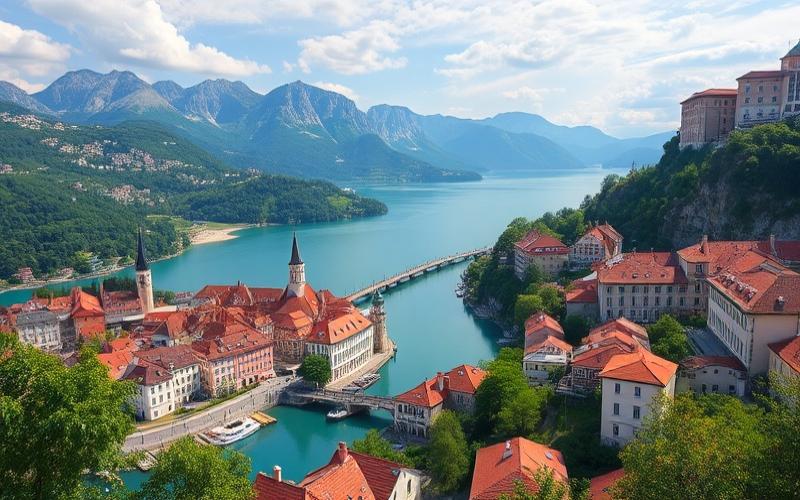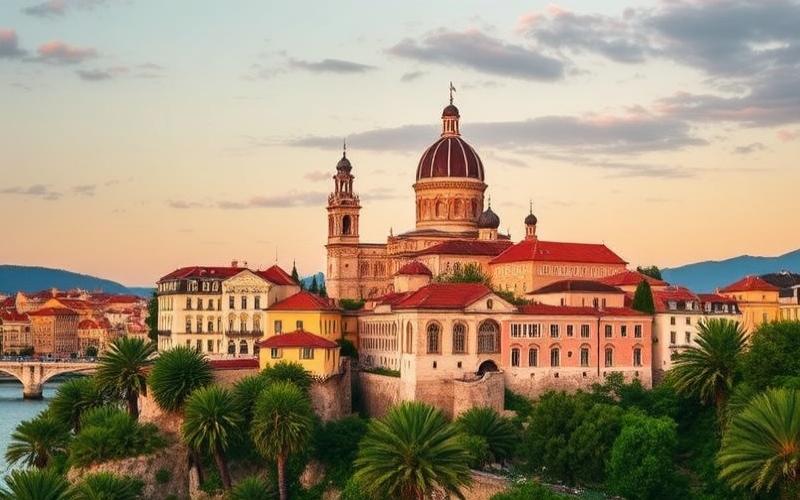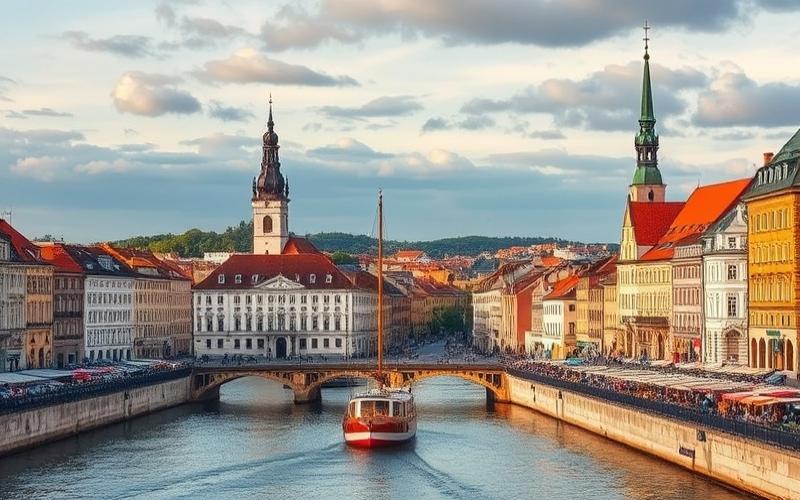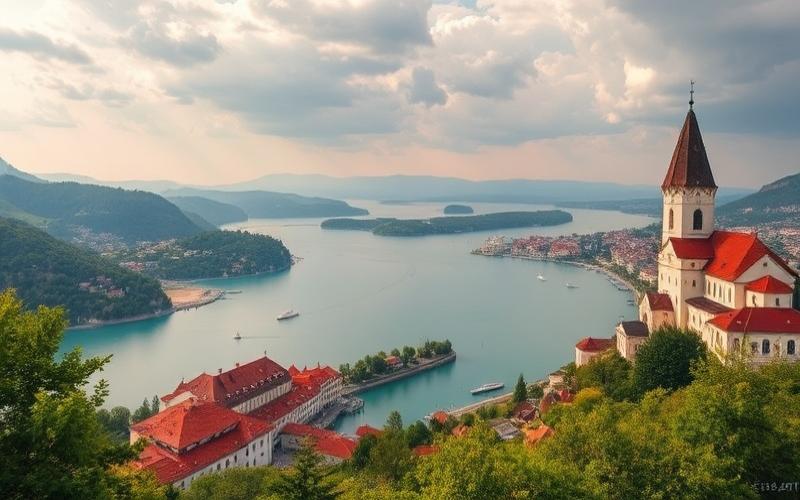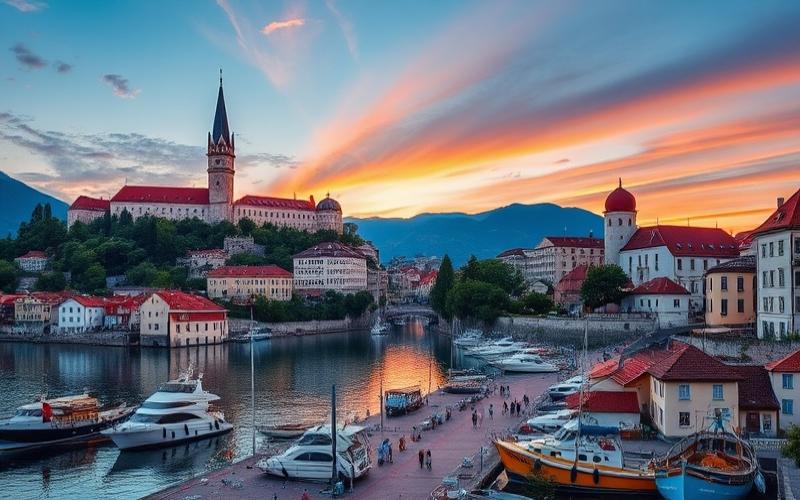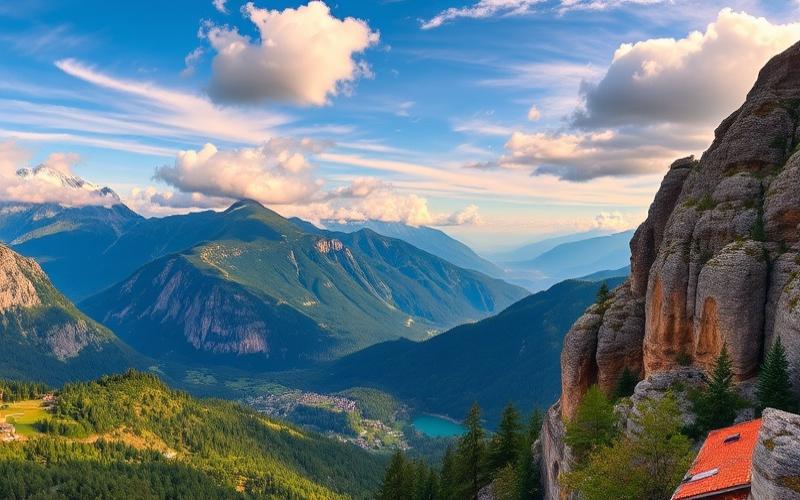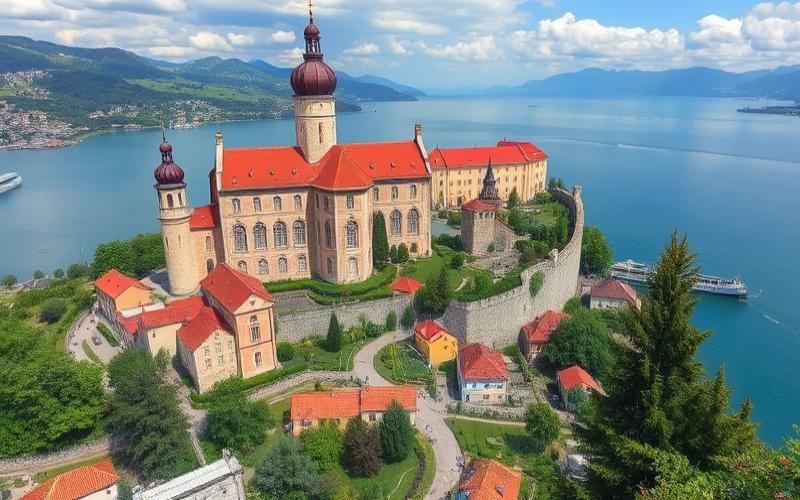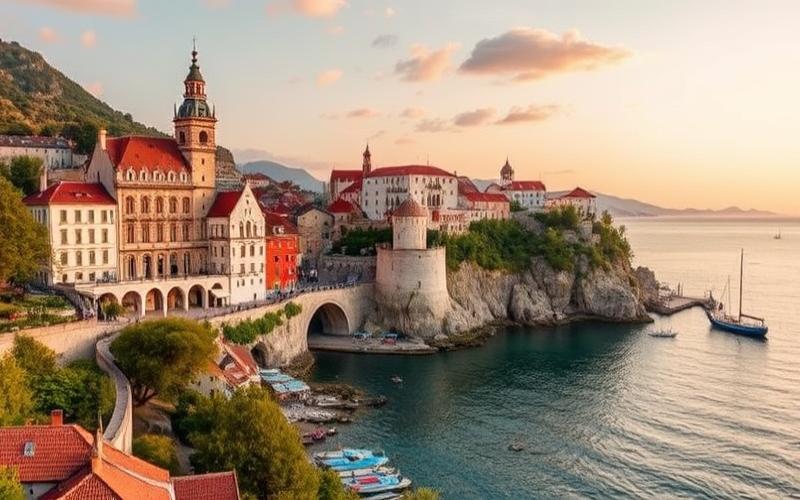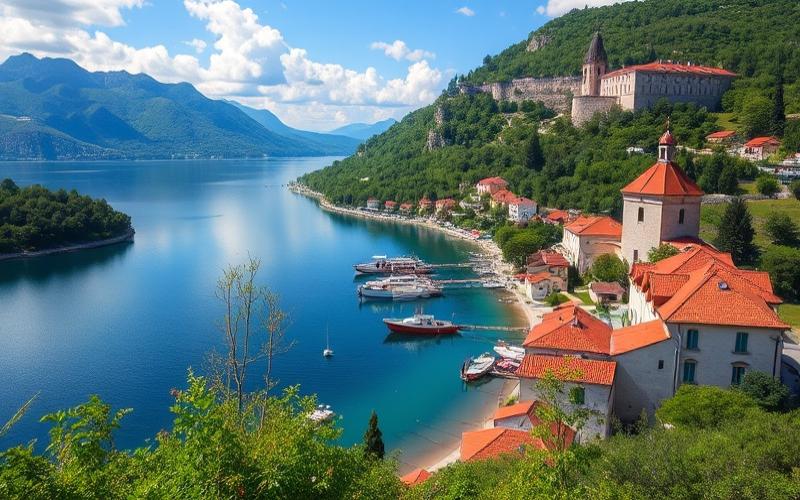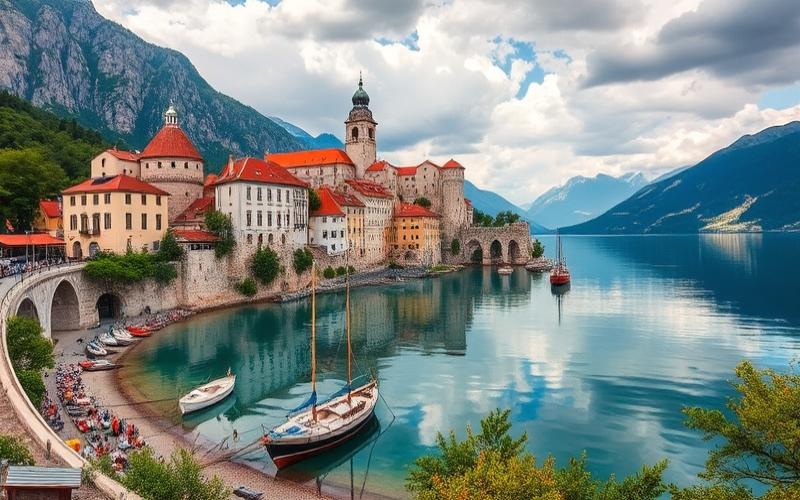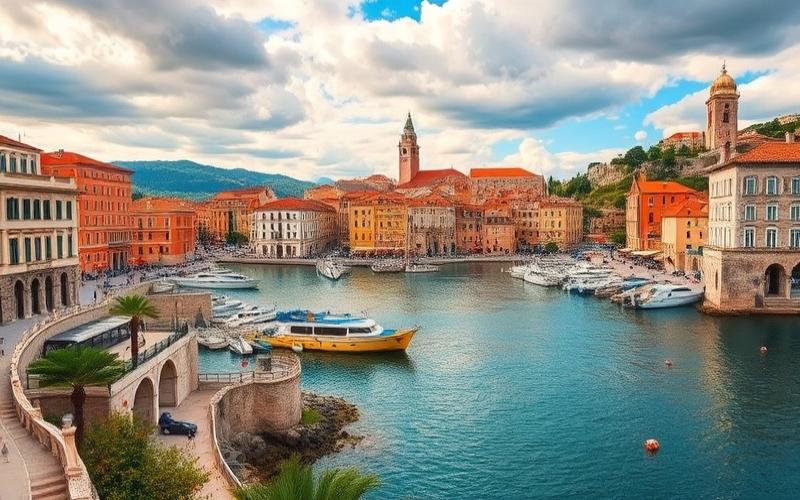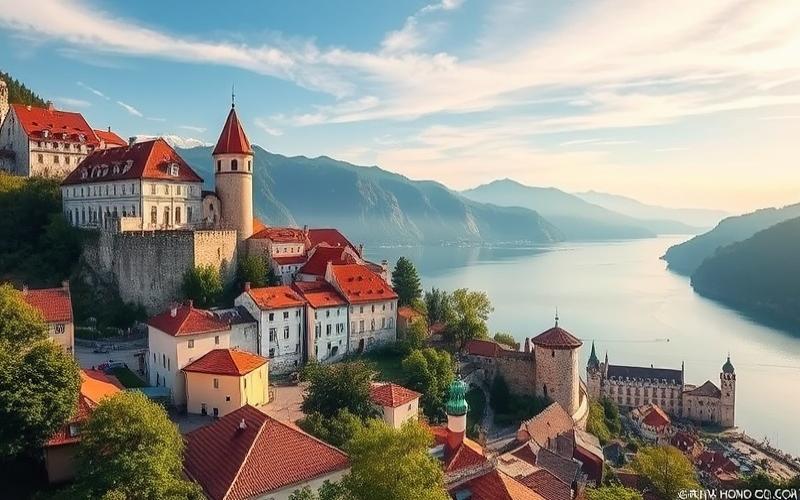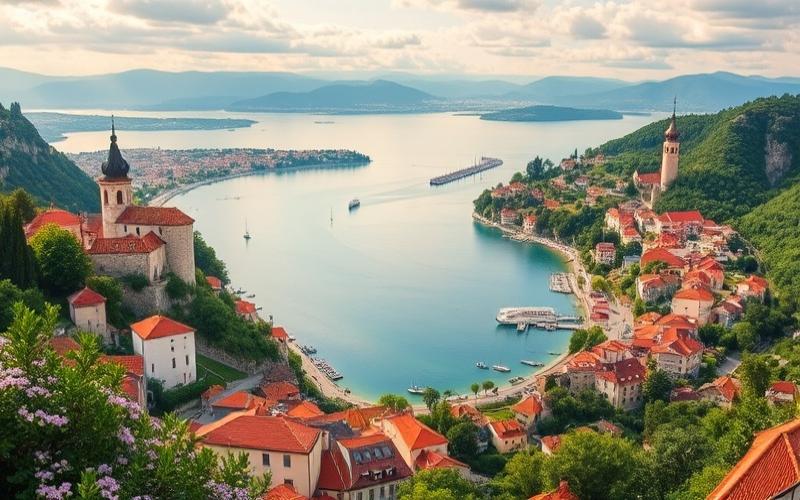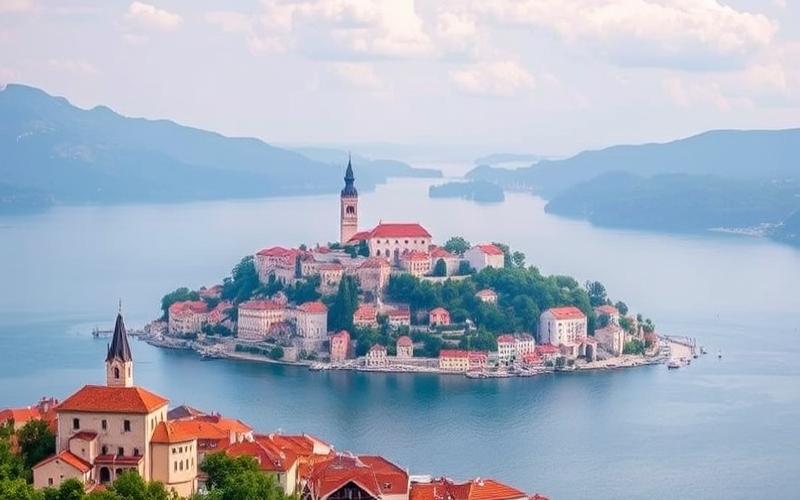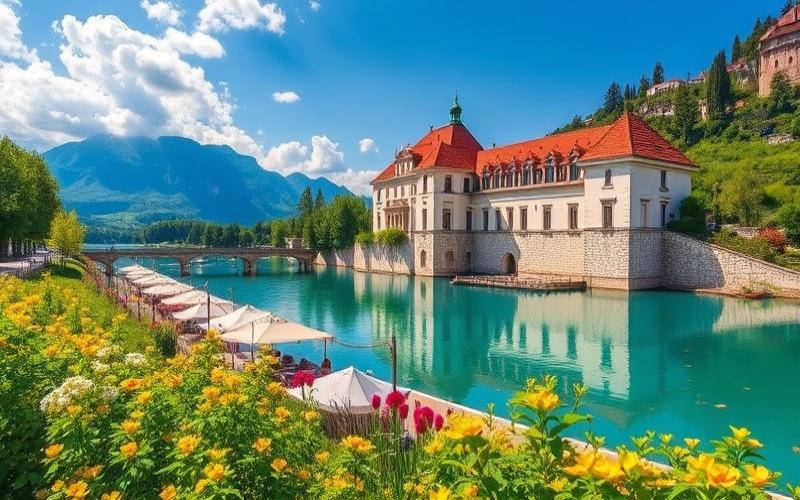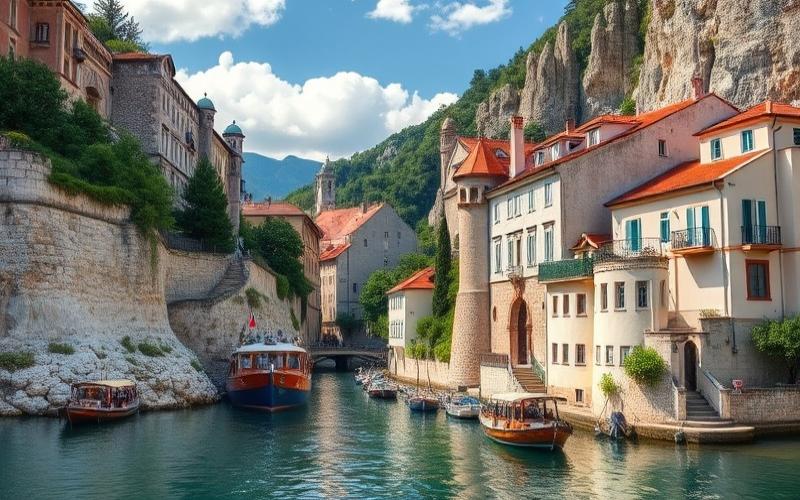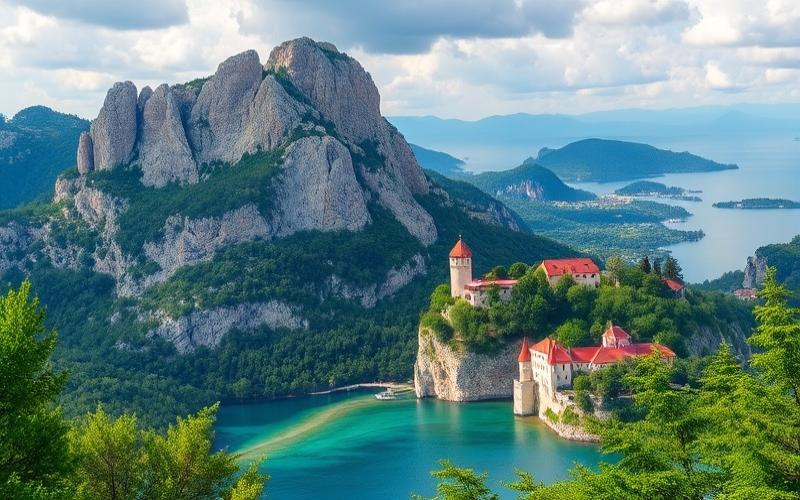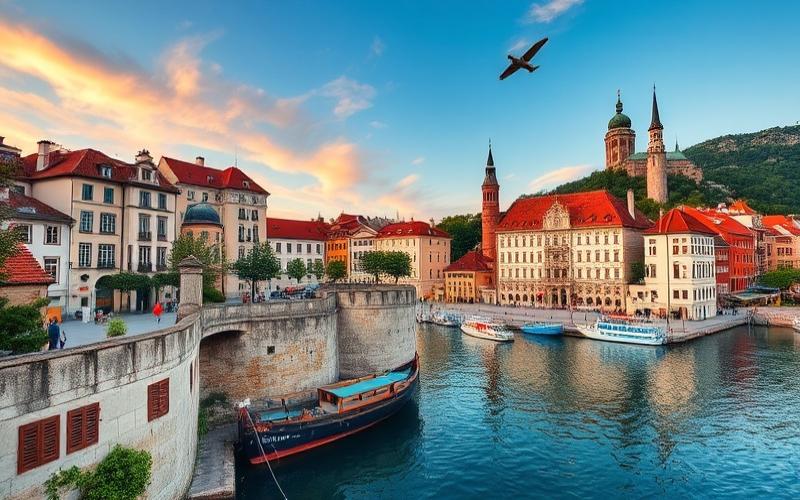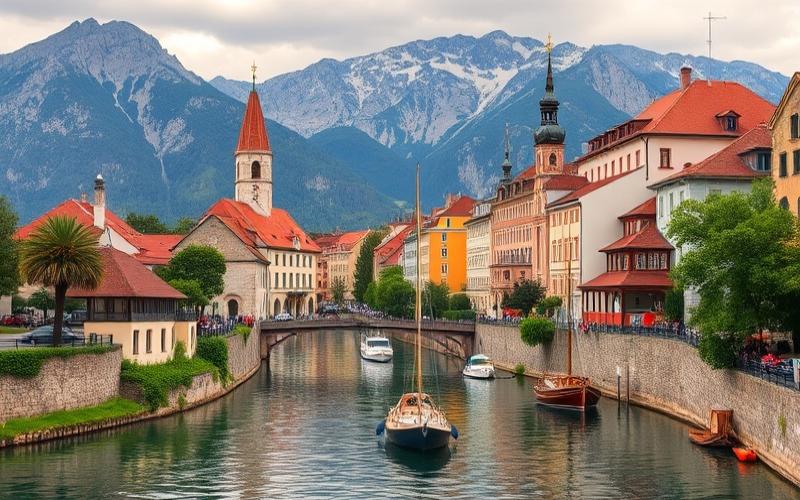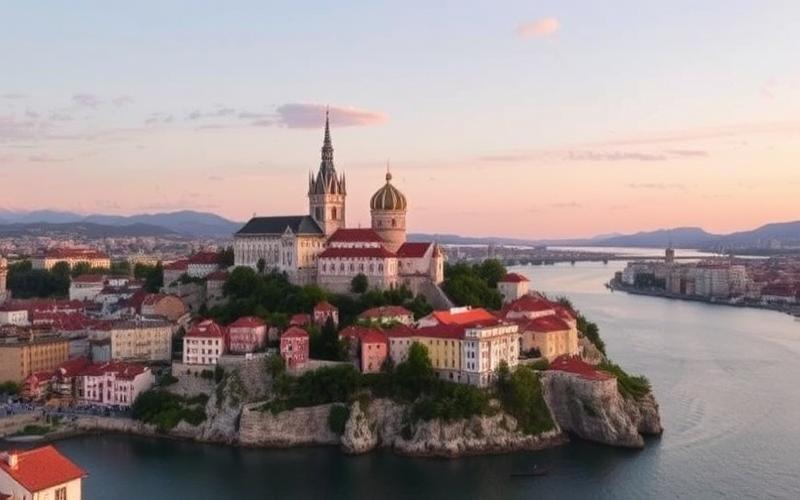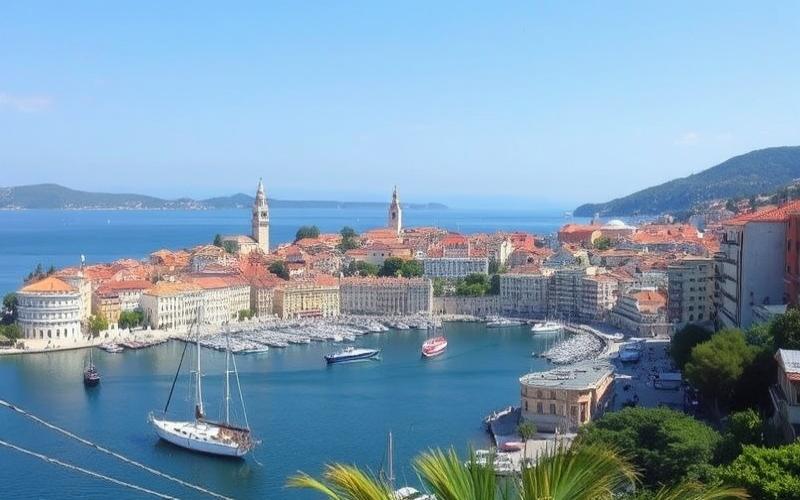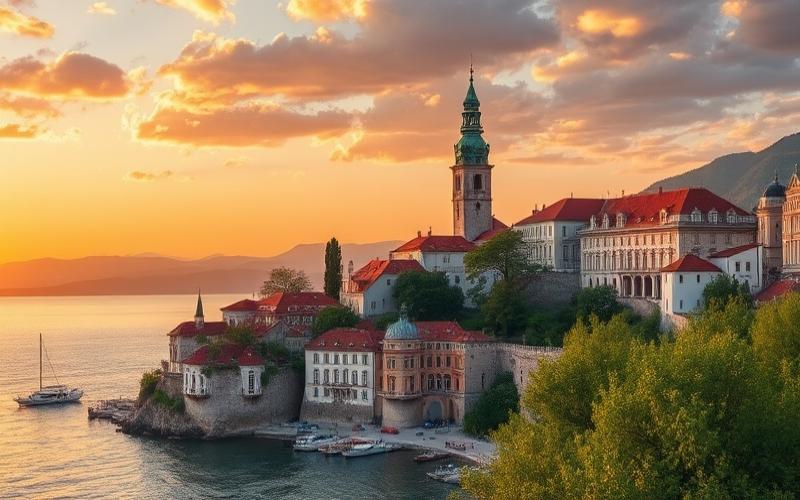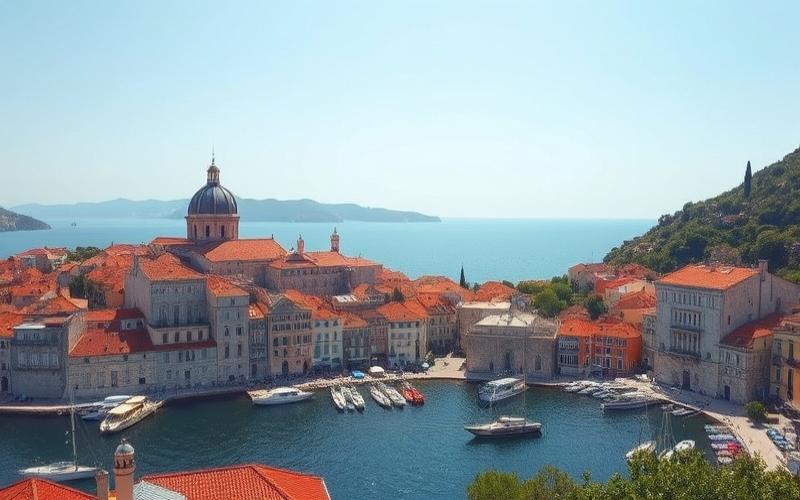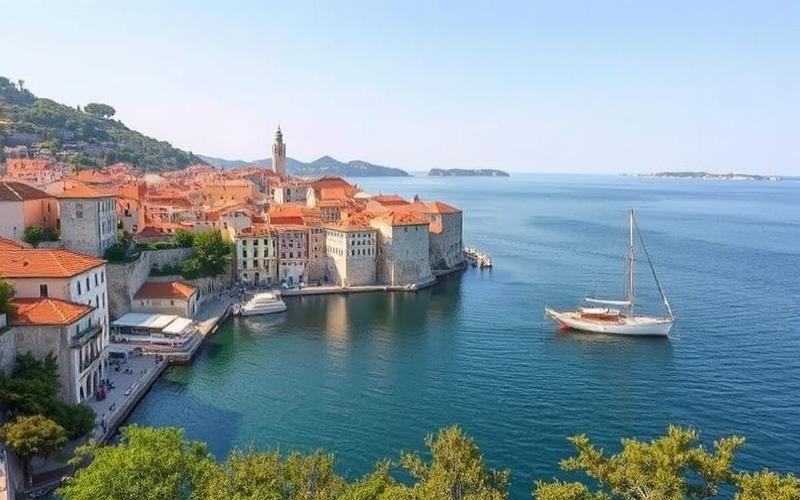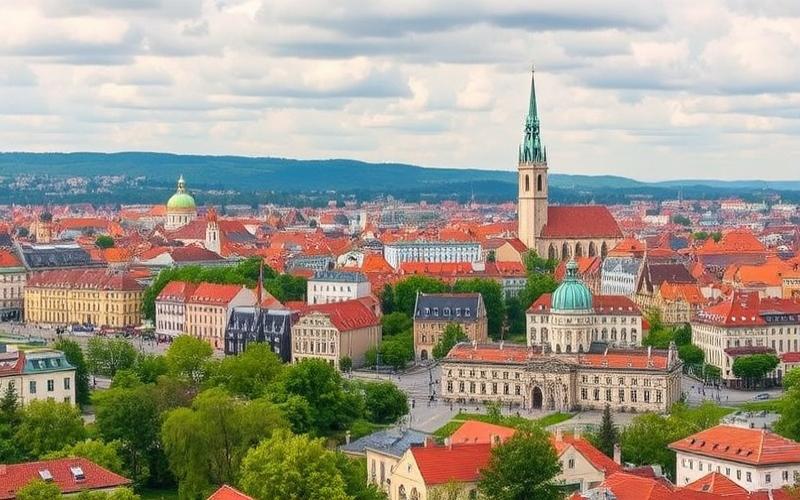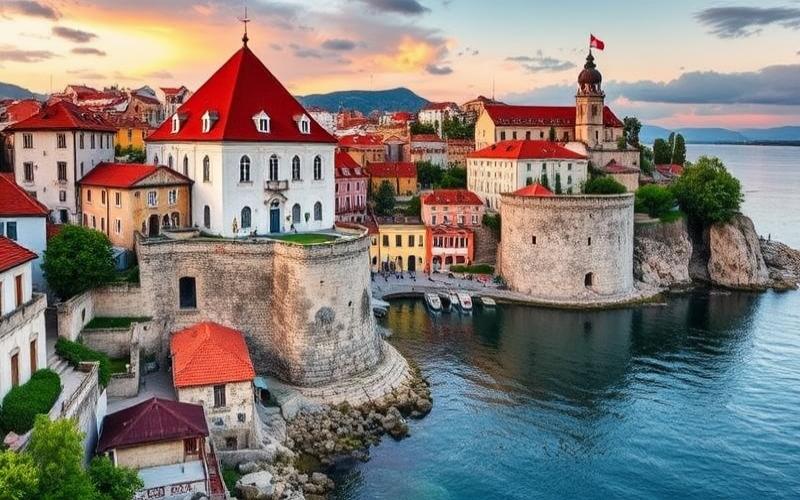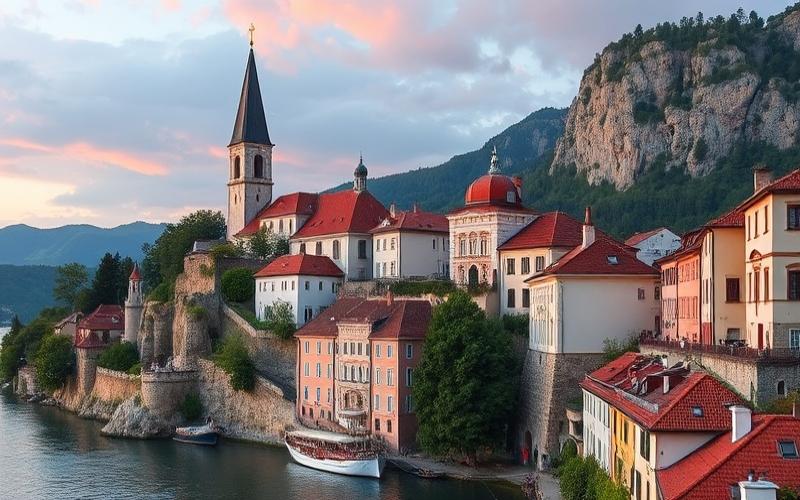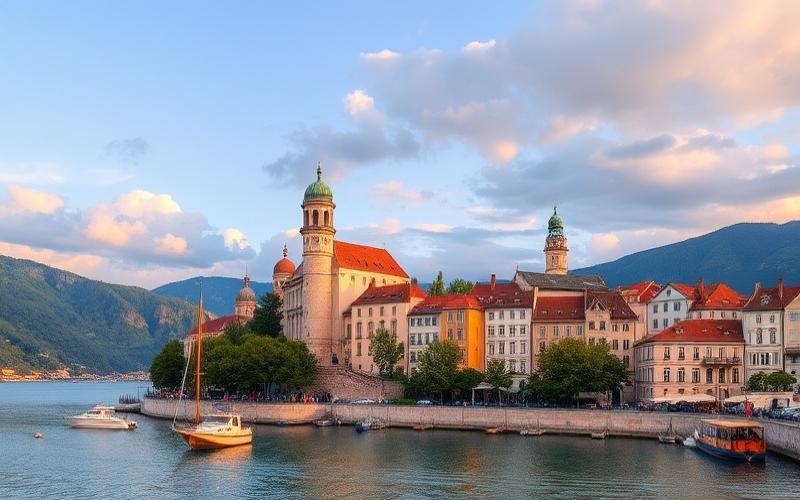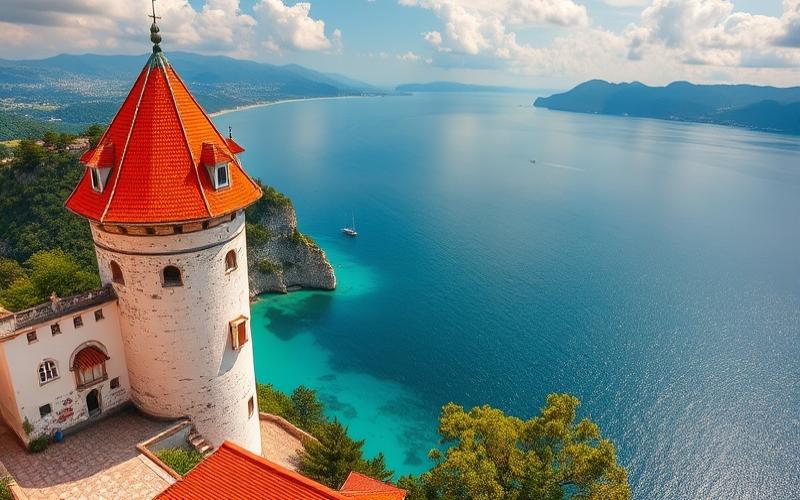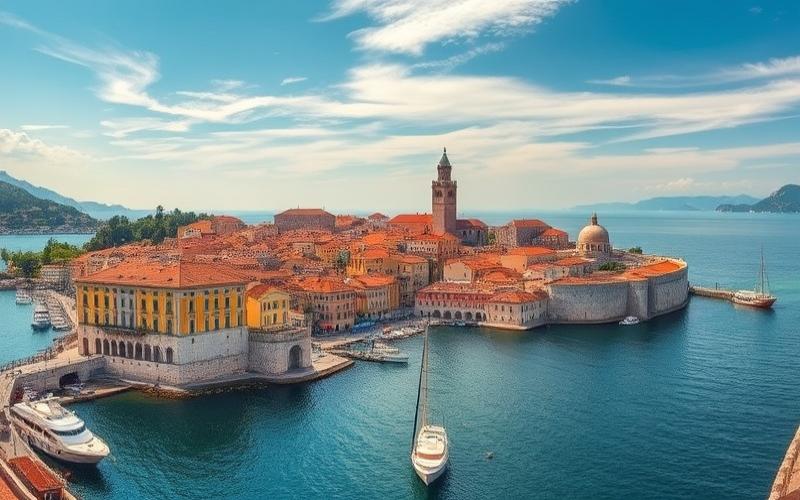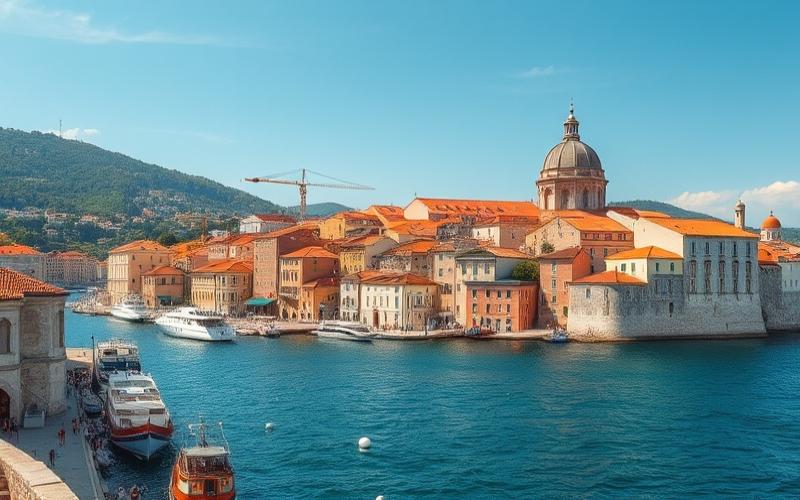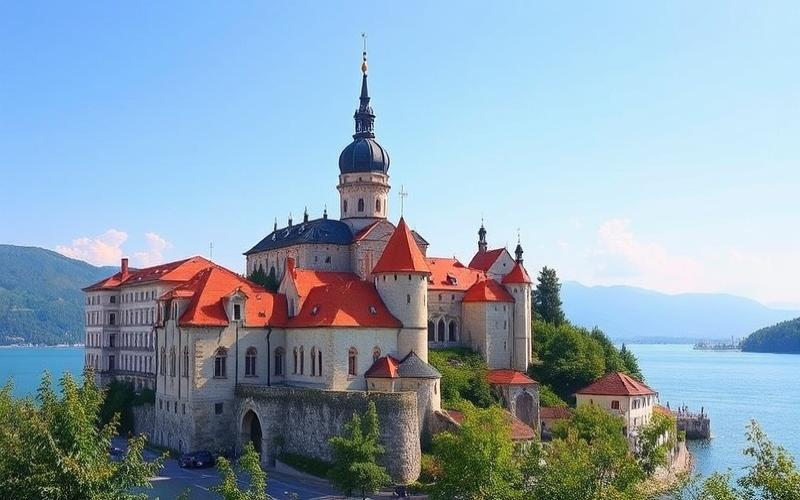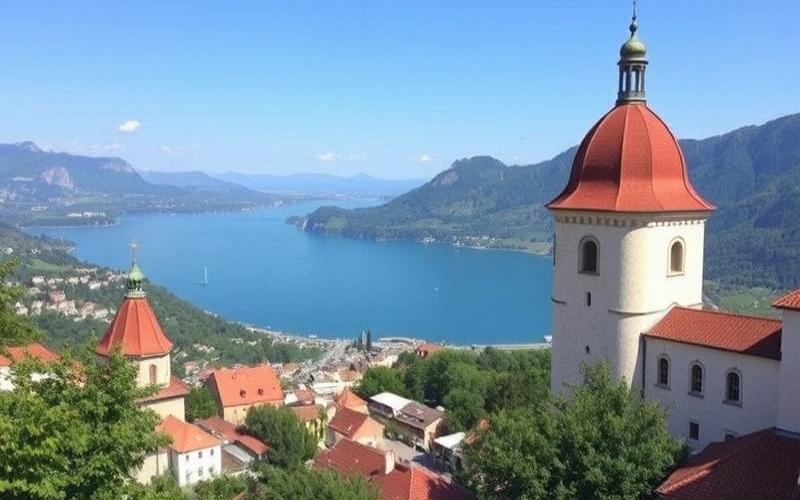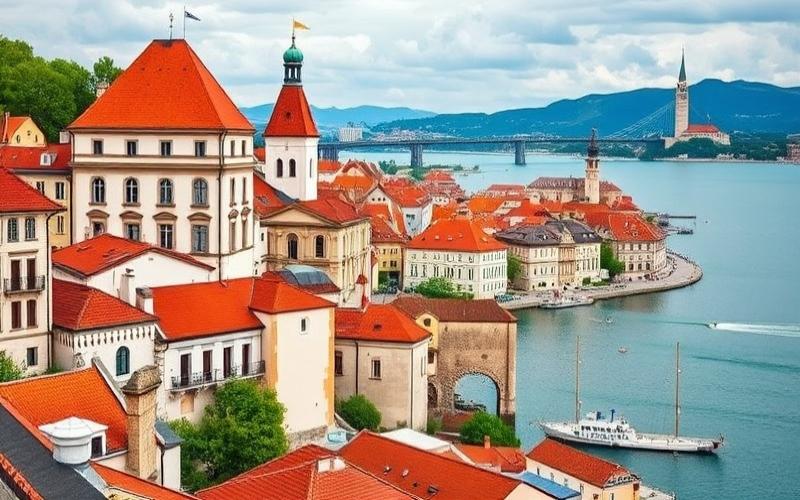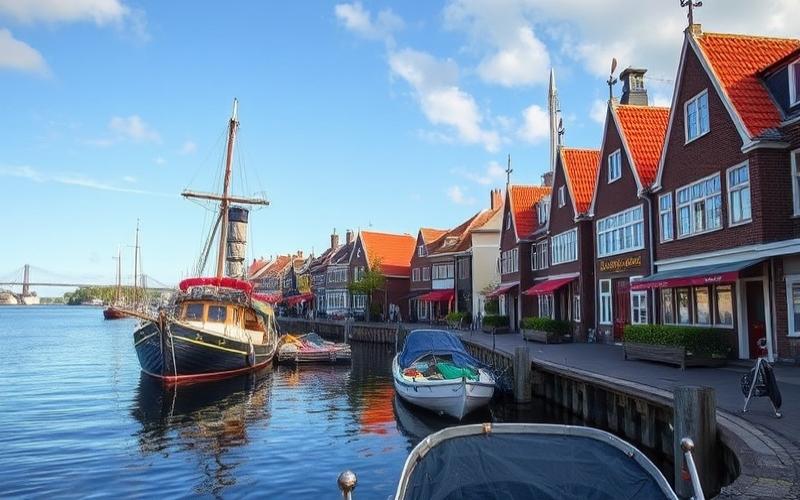
 Published on and written by Cyril Jarnias
Published on and written by Cyril Jarnias
Croatia’s Artist Villages: Between Culture and Tourism
Nestled in the heart of Europe, Croatia is now recognized for its picturesque landscapes and spectacular coastlines, but also for its unique artist villages flourishing in its most remote regions.
These creative havens are increasingly attracting travelers seeking cultural authenticity, raising the question: is this a genuine artistic initiative aimed at celebrating and preserving local heritage, or has this phenomenon become a profitable investment shaped by tourism demands?
Croatian artist villages capture the imagination, blending history, tradition, and innovation, while questioning the fine line between culture and commerce.
Good to Know:
Croatia boasts several renowned artist villages, such as Šibenik and Grožnjan, which host artist residencies and cultural festivals throughout the year.
Croatian Artist Villages: An Overview of Creative Communities
The emergence of artist villages in Croatia stems from specific historical and cultural circumstances, particularly following conflicts and migrations that left some villages nearly abandoned. In the early 1960s, Croatian authorities decided to repopulate these depopulated areas—such as Grožnjan—by offering vacant homes to artists. This initiative aimed to revitalize the local economy while highlighting regional cultural wealth.
Cultural and Economic Motivations
- Preservation of architectural heritage by occupying abandoned historical buildings.
- Creation of artistic hubs fostering regional cultural influence.
- Pursuit of new economic appeal through artistic and event tourism.
- Encouragement of international exchange among creators, promoting openness to Europe.
Iconic Examples:
| Village | Unique Characteristics | Cultural Contribution |
|---|---|---|
| Grožnjan | – Former medieval village – Repopulated by artists since 1965 – Numerous permanent galleries and workshops – International festivals (music, visual arts) | – Artistic influence throughout Istria – Regular organization of multicultural events |
| Motovun | – Typical Istrian hilltop town – Renowned film festival – Workshops for young creators – Blend of historical heritage and contemporary creation | – Revitalization of Croatia’s audiovisual sector – Platform for emerging filmmakers |
Role of Artists
– They drive local social renewal, transforming villages into vibrant centers where rural tradition and artistic modernity coexist.
– Their presence attracts diverse populations (visitors, students, professionals), creating a microcosm conducive to collective creativity.
Impact on Local Tourism
Observed effects:
- Significant increase in tourist attendance during festivals or seasonal exhibitions
- Development of themed tourism offerings centered on art (guided workshop tours, creative workshops)
- Indirect enhancement of local products through their integration into cultural events
Initiatives Promoting Cultural Exchange
Main actions undertaken:
- International artist residencies
- Partnerships with European schools or universities
- Organization of interdisciplinary symposiums bringing together painters, musicians, or writers
Artistic Communities: Cultural Investment & Economic Profitability
| Aspect | Opportunities | Challenges |
|---|---|---|
| Cultural | Living preservation of heritage Strengthening regional identity | Risk of homogenization if overly dependent on tourism |
| Economic | Diversification of local income sources Direct/indirect job creation | Uncertain sustainability outside tourist season Sometimes high initial investments |
Villages like Grožnjan thus embody a hybrid model where culture becomes an economic driver without losing its identity-specific character. However, this fragile balance requires local stakeholders to maintain constant vigilance against challenges related to sustainable management of tourist flows or generational renewal among resident artists.
This marriage between deep cultural heritage and contemporary dynamics makes Croatian artist villages a living laboratory where new economic forms linked to the creative sector are experimented with daily.
Good to Know:
Artist villages in Croatia, such as Grožnjan and Motovun, emerged after World War II to revive the local economy and promote culture. Grožnjan, transformed in the early 1960s, is known for its workshops and galleries that attract artists and visitors, contributing to cultural tourism. Motovun, with its film festival, supports artistic exchange and global openness. These communities present themselves as cultural investments, stimulating the economy through a steady influx of curious visitors and art enthusiasts. Artists play a crucial role in these areas by initiating collaborations and organizing events that energize local life. Despite income opportunities from cultural tourism, these villages face challenges such as seasonality and the need to preserve authenticity amid increasing commercialization. These villages demonstrate how culture can both enrich and become a vector for economic prosperity.
The Rise of Creative Eco-Villages in Croatia
The recent rise of creative eco-villages in Croatia aligns with a growing trend of interest in rural living, sustainable tourism, and artistic innovation. Since 2023, real estate activity in Croatian rural areas has increased by 10%, largely driven by enthusiasm for green tourism and alternative stays. Over 5,000 vacation homes have been built in regions like Istria and Dalmatia, illustrating the newfound attractiveness of these areas for residents, investors, and tourists seeking authentic and ecological experiences.
Local and National Support Initiatives
- Tax incentives for eco-friendly renovation and sustainable rural development.
- Support for artistic and cultural projects integrated into ecological approaches.
- Development of social infrastructure to support population retention and attract new residents to the countryside.
- Regulations to balance tourist and residential offerings, avoiding market saturation.
Ecological and Artistic Aspects That Appeal
- Construction with natural materials and promotion of energy self-sufficiency.
- Organization of art workshops, festivals, and artist residencies open to visitors and residents.
- Creation of shared gardens, organic farms, and short food supply chains.
- Enhancement of architectural and natural heritage through artistic initiatives (land art, installations, performances).
Comparative Table of Eco-Villages
| Eco-Village | Region | Artistic and Ecological Specificities | Role in the Community |
|---|---|---|---|
| Vukomeric | Near Zagreb | Artist residencies, collaborative workshops, permaculture, co-housing | Cultural animation, training in sustainable practices |
| ZMAG | Near Jastrebarsko | Education on ecological transition, permaculture design, hosting artists | Hub for social and ecological innovation |
| Eko Selo Gradunje | Dalmatia | Art projects connected to nature, restoration of traditional houses | Development of green and cultural tourism |
Economic and Cultural Impacts
Economic:
- Creation of local jobs in organic farming, crafts, accommodation, and cultural activities.
- Increase in property values in attractive rural areas.
- Diversification of income for residents through hosting tourists and artists.
- Mitigation of rural depopulation by attracting new populations motivated by sustainable and creative lifestyles.
Cultural:
- Revival of local traditions through artistic reinterpretation.
- Opening of villages to international influences through residencies and festivals.
- Transmission of ecological and artistic know-how to youth and visitors.
- Strengthening of community belonging and social cohesion around common projects.
Cultural Investments and Profitability
Creative eco-villages can become hubs of cultural attractiveness at a regional scale, justifying public and private investments in renovation, event creation, and social innovation.
Many have successfully transformed their models into profitable economic projects, combining tourist accommodation, artistic workshops, and sustainable agricultural production.
These initiatives represent an important lever for territorial valorization, while offering concrete responses to challenges of ecological transition and rural revitalization.
Good to Know:
The rise of creative eco-villages in Croatia has been marked by a notable increase in their number and popularity in recent years, supported by local and national initiatives focused on sustainability and artistic innovation. These villages, such as the Vukomeric eco-village and Stancija eco-village, host dynamic communities of artists promoting ecological practices and innovations in sustainable design. By attracting both residents seeking alternative lifestyles and curious tourists, these eco-villages stimulate the local economy, offering new employment opportunities while strengthening regional cultural cohesion. Furthermore, they represent a significant cultural investment, leveraging their economic potential by transforming into profitable artistic and ecological tourist destinations.
Key Takeaway: Creative eco-villages in Croatia embody a synergy between ecology, art, and rural development, generating major economic and cultural benefits for their regions and paving the way for new models of responsible living and tourism.
Renovating an Art Farm: The New Investor’s Eldorado
The growing appeal for investors in renovating art farms in Croatia is explained by the unique combination of an exceptional cultural landscape and economic potential fueled by real estate appreciation and cultural tourism.
Reasons for the Sector’s Attractiveness:
- Cultural and Artistic Uniqueness:
Croatia possesses a singular artistic and architectural heritage, blending Mediterranean, Austro-Hungarian, and Balkan influences. This context fosters the creation of atypical places conducive to the emergence of artist residencies and creative spaces recognized at the European level. - Preserved Natural Landscapes:
Farms, often located in remarkable natural settings (islands, mountains, Dalmatian hinterland), offer an inspiring environment sought after by artists and tourists. - European Cultural Dynamics:
Several European programs and cross-border collaborations encourage artistic mobility, renovation of heritage sites, and establishment of artist residencies, enhancing the territory’s visibility and appeal.
Potential Financial Advantages:
- Real Estate Appreciation:
Transforming traditional farms into innovative artistic spaces generates an increase in land and property value, driven by international demand and the positive image associated with art and ecotourism. - Cultural Tourism:
Renovated farms attract not only artists in residence but also visitors, collectors, and art enthusiasts, creating a high-value-added tourist flow. - Residential and Creative Synergy:
The coexistence of high-end housing and artistic expression spaces energizes rural territories, boosts the local economy, and ensures year-round continuous attendance.
Success Examples:
| Renovated Farm | Location | Main Activity | Economic Impact |
|---|---|---|---|
| Eko Selo Art Farm | Slavonia | Artist residencies, workshops | Increase in tourism, creation of local jobs |
| Motovun Art Estate | Istria | Galleries, creative stays | Land valorization, international attractiveness |
| Art Colony Grožnjan | Istria | Festival, exhibitions | Regional notoriety, tourist spillover |
Complementarity Between Residential Development and Artistic Space:
- Mixed projects allow for the combination of accommodations, workshops, exhibition spaces, and events, thus maximizing revenue while fostering local integration.
- This hybridization meets both investor expectations (profitability) and those of artistic communities (creation and dissemination spaces).
Associated Risks and Challenges:
- High Renovation Cost:
Rehabilitating old buildings often requires significant investments, especially to meet safety, insulation, and heritage preservation standards. - Heritage Regulations:
Administrative procedures can be complex: listed farms or those in protected areas impose strict constraints (materials, usage, extension). - Seasonality Risk:
Cultural tourism sometimes remains concentrated in certain periods, which can limit annual profitability. - Local Management Challenges:
Finding a balance between international openness and integration into the local fabric requires adapted governance and sustainable partnerships.
Summary of Key Factors:
| Main Asset | Expected Advantage | Associated Risk |
|---|---|---|
| Unique Cultural Landscape | Strong Tourist Attractiveness | Strict Regulations |
| Real Estate Appreciation | Medium-Term Added Value | High Initial Cost |
| Residential/Art Mix | Local Economic Dynamism | Complex Usage Management |
Key Takeaway:
Investment in renovating art farms in Croatia relies on the country’s cultural uniqueness and real estate valorization potential but requires a strategic approach to regulatory and financial challenges.
Good to Know:
Renovating an art farm in Croatia is becoming a new Eldorado for investors attracted by the uniqueness of the country’s cultural and artistic landscape. This trend is explained by the real estate valorization such renovation can bring, particularly due to the rise of cultural tourism that attracts visitors eager to discover the local art scene. Among the success examples are the transformation of certain farms into artistic expression spaces, like those in the Istria region that revitalized the cultural sector while increasing their land value. These projects often offer a complementarity between quality residential development and a space dedicated to artistic creation, thus maximizing their appeal. However, investors must consider potential challenges, such as high renovation costs and strict heritage preservation regulations, which can complicate and burden projects.
Artistic Community and Real Estate: A Profitable Marriage?
The influx of artists and art enthusiasts into artist villages in Croatia acts as a catalyst on the local real estate market, often leading to a significant appreciation of properties. This phenomenon is particularly observed in coastal and historical regions where artistic tradition is already well-established, such as Istria (Rovinj, Poreč) or Dalmatia (Split, Trogir, Šibenik).
Main Effects of the Artistic Community on the Real Estate Market:
- Increase in Real Estate Demand
- The arrival of artists attracts not only creators but also art enthusiasts, collectors, and cultural tourists.
- Increased demand translates into a rise in price per square meter, especially for renovated old houses or workshops transformed into high-end residences.
- Renovation of Traditional Buildings
- Investors often prioritize careful renovation of old typical stone houses (notably in Rovinj or Poreč), giving them new heritage and aesthetic value.
- This dynamic helps preserve architectural character while modernizing the offering.
- Local Economic Development
- The emergence of galleries, collective workshops, and festivals stimulates the local economy through:
- Creation of new jobs related to cultural tourism
- Increased revenue for hospitality and restaurants
- Enhanced international visibility
- The emergence of galleries, collective workshops, and festivals stimulates the local economy through:
| Region | Observed Effects | Average Price €/m²* | Specific Dynamic |
|---|---|---|---|
| Rovinj/Poreč | Heritage renovation & artist influx | ~1,485 | Strong tourist & cultural attractiveness |
| Split/Trogir | Seasonal rental development | high (>2,000) | Investments in historic neighborhoods |
| Dubrovnik | Spectacular increase | ~2,494 | Very tight market – limited supply |
Economic Benefits:
- Sustainable valorization of the real estate portfolio
- Economic diversification through tourism less dependent on beach resorts
- Strengthening of local identity via a dynamic cultural scene
Potential Disadvantages:
- Risk of gentrification leading to exclusion of traditional local residents due to rapid rent and property price increases
- Possible homogenization if development is not controlled (loss of authentic character)
- Increased pressure on local infrastructure during high season
Public Policies & Local Initiatives
In Croatia:
- Some municipalities actively encourage this marriage between art and real estate through:
- Subsidies for rehabilitation/restoration in classified old centers
- Regular organization of artistic festivals allowing local/foreign artists to exhibit their works
- Logistical support for creating shared workshops or artist residencies
However, unlike some countries like France with its “Maisons des Artistes,” there is not yet a structured national framework specifically for these dynamics. Initiatives remain primarily driven by local authorities keen on enhancing their cultural attractiveness.
International Comparison:
| Country | Dominant Approach |
|---|---|
| France | Labeled “Most Beautiful Villages,” tax incentives for heritage restoration oriented towards cultural activities; strong national policy |
| Portugal | Pilot projects blending artist residency/revitalized rural real estate |
| Germany | Strong institutional support for historical artist colonies |
Croatia thus aligns more with a Mediterranean logic where art rhymes with tourist attractiveness; however, it still benefits today—compared to saturated French or Italian markets—from significant potential linked to its preserved heritage.
The growing settlement of artists undeniably energizes the Croatian real estate market while raising questions about its social regulation.
Good to Know:
In Croatia, artist villages like Grožnjan and Motovun are experiencing an increase in real estate prices, stimulated by the influx of creatives and art enthusiasts, which valorizes local properties. However, this trend can also lead to gentrification, making housing less accessible for local residents. Local initiatives, such as subsidies to restore historical buildings into artistic spaces, aim to regulate this phenomenon while encouraging cultural development. Comparatively, countries like France with the case of Montmartre, or the Wynwood district in Miami, USA, illustrate how art can revitalize urban areas while pushing prices upward. This shows that, despite economic benefits for some sectors, the challenge remains to balance cultural development and housing accessibility.
Disclaimer: The information provided on this website is for informational purposes only and does not constitute financial, legal, or professional advice. We encourage you to consult qualified experts before making any investment, real estate, or expatriation decisions. Although we strive to maintain up-to-date and accurate information, we do not guarantee the completeness, accuracy, or timeliness of the proposed content. As investment and expatriation involve risks, we disclaim any liability for potential losses or damages arising from the use of this site. Your use of this site confirms your acceptance of these terms and your understanding of the associated risks.

